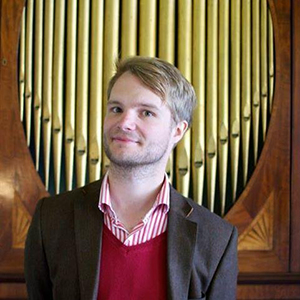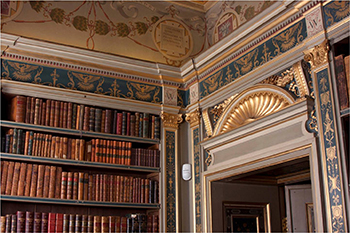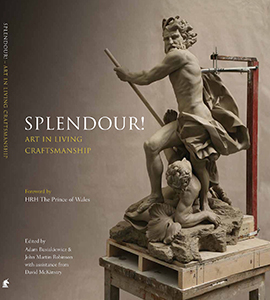Adam Busiakiewicz
 Thesis: The Countess’s Palette: Anne, Countess of Warwick (1823-1903)
Thesis: The Countess’s Palette: Anne, Countess of Warwick (1823-1903)
Supervisor: Michael Hatt
Background
Academic
BA in History (University College London)
MA in Fine and Decorative Art (Sotheby’s Institute of Art in London)
Winner of CADRE Postgraduate Scholarship
Professional
Accredited Lecturer for NADFAS (National Association of Decorative and Fine Art Societies).
Guide Lecturer at the Wallace Collection.
Catalogue editor of the Georgian Group’s 80th Anniversary Exhibition.
Member of the Young Georgians.
Head of Historical Interpretation at Warwick Castle (2010-2013).
Art and History Blog - adamfineart.wordpress.com/
PhD Thesis:
 Today Warwick Castle stands as one of Britain’s most popular and well-preserved medieval fortifications. Reaching back over one thousand one hundred years, the castle’s imposing walls and towers remain a symbol of the fame achieved by the Earls of Warwick during the fourteenth and fifteenth centuries, when the owners wielded the power of Kingmaker over the British throne. In 1604 the abandoned fortress was given to an Elizabethan Courtier, Sir Fulke Greville, who spared no expense in transforming the ruinous building into a splendid home which he established as the family’s seat. Despite the popularity of the castle as an attraction in modern times, little academic attention has been given to the later owners or interiors of the castle.
Today Warwick Castle stands as one of Britain’s most popular and well-preserved medieval fortifications. Reaching back over one thousand one hundred years, the castle’s imposing walls and towers remain a symbol of the fame achieved by the Earls of Warwick during the fourteenth and fifteenth centuries, when the owners wielded the power of Kingmaker over the British throne. In 1604 the abandoned fortress was given to an Elizabethan Courtier, Sir Fulke Greville, who spared no expense in transforming the ruinous building into a splendid home which he established as the family’s seat. Despite the popularity of the castle as an attraction in modern times, little academic attention has been given to the later owners or interiors of the castle.
One owner of particular interest is Anne Greville (1829-1903), née Charteris, 4th Countess of Warwick, who presided over the restoration of the castle after the disastrous fire of 1871. This catastrophe initiated a great period of renewal, as the entire domestic apartments had been consumed by the flames. Considering Anne’s artistic abilities and far-reaching connections within the art world, her involvement in this restoration is intriguing and unexplored. In the 1891 census she was described as an ‘Artist – Sculptor’ in full, suggesting a self-awareness as a professional creator of works of art. She was one of the few of female artists who exhibited artworks in sensational opening exhibition of the Grosvenor Gallery in 1877. Admirers and collectors of her work included the Royalty, with Prince Leopold writing to her in December 1880 that “I have always been anxious to possess some work of yours”.
The sheer variety of art forms and mediums explored by the Countess, which ranged from the visual and plastic arts to book binding, ceramics and interior decoration, is a testament to her talent and artistic ambition.
As a basis for my PhD I intend to examine the career and life of Anne Greville, and evaluate the extent to which she was representative of female artists of her period. My research will attempt to place the Countess within a context of contemporary British female artisans and provide an interesting case study which illustrates the fluid nature of public and private spheres in which female artists moved during the Victorian period. I intend to investigate her significance as an artist, collector, designer and patron within the last quarter of the nineteenth century. Alongside these key areas of enquiry, I hope to explore the achievements made possible by aristocratic and professional female artists within the late nineteenth century, and examine the roles that patronage and philanthropy played within Anne’s public and personal life. A major part of my study will be documenting her work in the recreation of the domestic apartments and interiors at Warwick Castle. Recent study into the underrated accomplishments of women artists, such as the prolific Louisa Beresford, has revealed the true legacies of these remarkable women whose status brought them into contact with leading figures of their day.
 Academic Interests
Academic Interests
- Warwick Castle and the Earls of Warwick
- The English Country House
- Old Master Paintings
- British Art 1500-1900
- British Portraiture
- Arms and Armour
- Music in Old Master Painting
- The history and iconography of the Lute
Publications
Books
A.Busiakiewicz and J.M Robinson (eds.), Splendour! Art in Living Craftsmanship, London: Unicorn Press, 2017.
Articles
A. Busiakiewicz, “Sir Fulke Greville’s curious collection”, The Sidney Journal, (forthcoming Spring 2017).
A. Busiakiewicz, “Portrait of a man with a lute”, Hispanica Lyra Revista, La Sociedad da Vihuela, no. 22, November 2016, iconographic supplement and front cover.
A.Busiakiewicz, “Conservation in a Millennial Context”, Splendour! Art in Living Craftsmanship, London: Unicorn Press, 2017, pp. 50-55.
A. Busiakiewicz, “Who’s the man in the beard? A speculative look at a mysterious portrait by Sir Anthony Van Dyck”, The British Art Journal, XV, 3, 2015, pp. 82-84.
Upcoming Lectures
31st March 2017 - The colour blue - materials, symbolism and significance - The Wallace Collection.
26th April 2017 - Talk & Performance relating to Ter Brugghen's's Lute Player - National Gallery, London. 1pm.
17th October 2017 - Sir Fulke Greville - collector, builder, gardener and Warwickshire man - Warwickshire Local History Society
16th November 2017 – The Warwickshire Museum’s Hans Frei Lute c.1550 - Warwick Market Place Museum.
